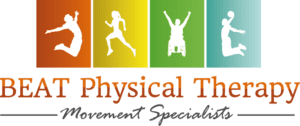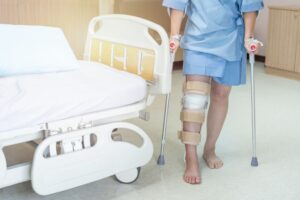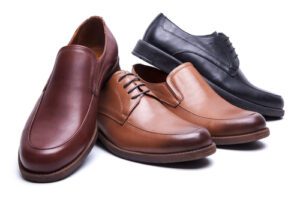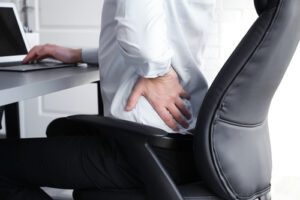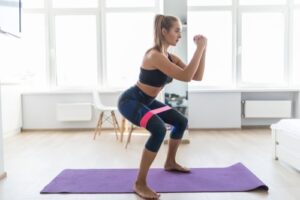Written By: Dr. Maria Arini, PT, DPT / Edited By: Dr. Day Alfonso, PT, DPT
The days are getting shorter and the crisp autumn winds are blowing as the leaves start to change color. Fall is a wonderful season for exciting things like warm apple cider, corn mazes, and pumpkin and apple picking, but along with these fun activities also comes the dreaded chore of raking up those beautiful leaves piling up in your yard. Although raking seems to be a self – explanatory movement, improper technique might lead to pain or injury, especially of the low back, shoulders, hip, and elbow.
Here are some helpful tips prior to initiating a raking session outdoors:
- Warm up. A brisk walking or gentle stretching exercises of the arms, legs, and back will do the trick. (Examples: arm circles, mini squats, trunk rotations, and trunk side bends). To avoid injury, it is much better for the muscles to be warm before starting a strenuous activity such as raking.
- Use the right tool your body able to handle. Make sure the rake handle is tall enough for your body type so that you don’t have to compensate with your body by bending forward over a shorter rake handle. This might potentially put more strain on the muscles of the back. Consider the use of an ergonomic rake and test them out to see if this is easier to use than a normal rake with a straight handle. It may or may not be, depending on your size and height.Make sure that the rake is not too heavy. Try lighter weight rakes since heavier ones would require more effort to manipulate and create more tension in the arms and neck. Also keep in mind durability as plastic rakes, while lighter weight, might break more easily than metal ones.
- Rake with proper body mechanics.
- One hand on the handle and the other slightly below, keeping the elbows slightly bent and using the strength of your arms and legs instead of twisting from your back to pull the rake toward you.
- To avoid blisters on the hands, wear gloves and alternate hand positions to minimize repeated pressure on the same spots on the hands and to ensure that you are using both sides of the body evenly and not just one side only.
- Place one leg in front of the other in what is known as a staggered stance to increase your base of support for stability and balance, and move your legs when changing the direction of the rake instead of again twisting from the back.
- Keep your back straight with your core (tummy muscles) activated to avoid excessive twisting motions as this may increase the pressure and shearing forces on the discs in between your spinal vertebrae.
- When you bag the leaves that you rake, it is very important to avoid bending down at the waist. Instead use your legs to squat down or even kneel down on the ground to reduce stress on the low back. Some people use foam pads to take direct pressure off of the kneecaps if kneeling is the best option for bagging leaves.
- When you lift the filled bags of leaves, lift with your legs, not arching from the low back. Keep the back straight and core activated to protect the spine. Do not overfill the bags to the point where they are difficult to lift, especially if the leaves are wet since they are much heavier than dry leaves.
- Do not hold your breath when you lift the bags, but rather breathe normally while maintaining an activated core.
- Listen to your body. Stop when needed. Take water breaks or sit down and enjoy being outside while you catch your breath. Being mindful of your own limitations and staying hydrated is helpful! The longer you are out in the sun and actively moving/sweating, the more breaks in between is advised. Do not rush to get the task done. Fatigue leads to poor technique and body mechanics, which may lead to potential bodily injury.
- Talk to your doctor or a BEAT physical therapist if injury does occur. It is important to pay attention to any body pains after an accident or injury.
Unsure what to do? BEAT PT is always here to help you recover.
Call 410-884-0003 and speak to one of our dedicated staff to schedule a visit or physical therapy evaluation. We will check your insurance rehab benefits and eligibility and tell you exactly if you need a primary care physician’s referral.
